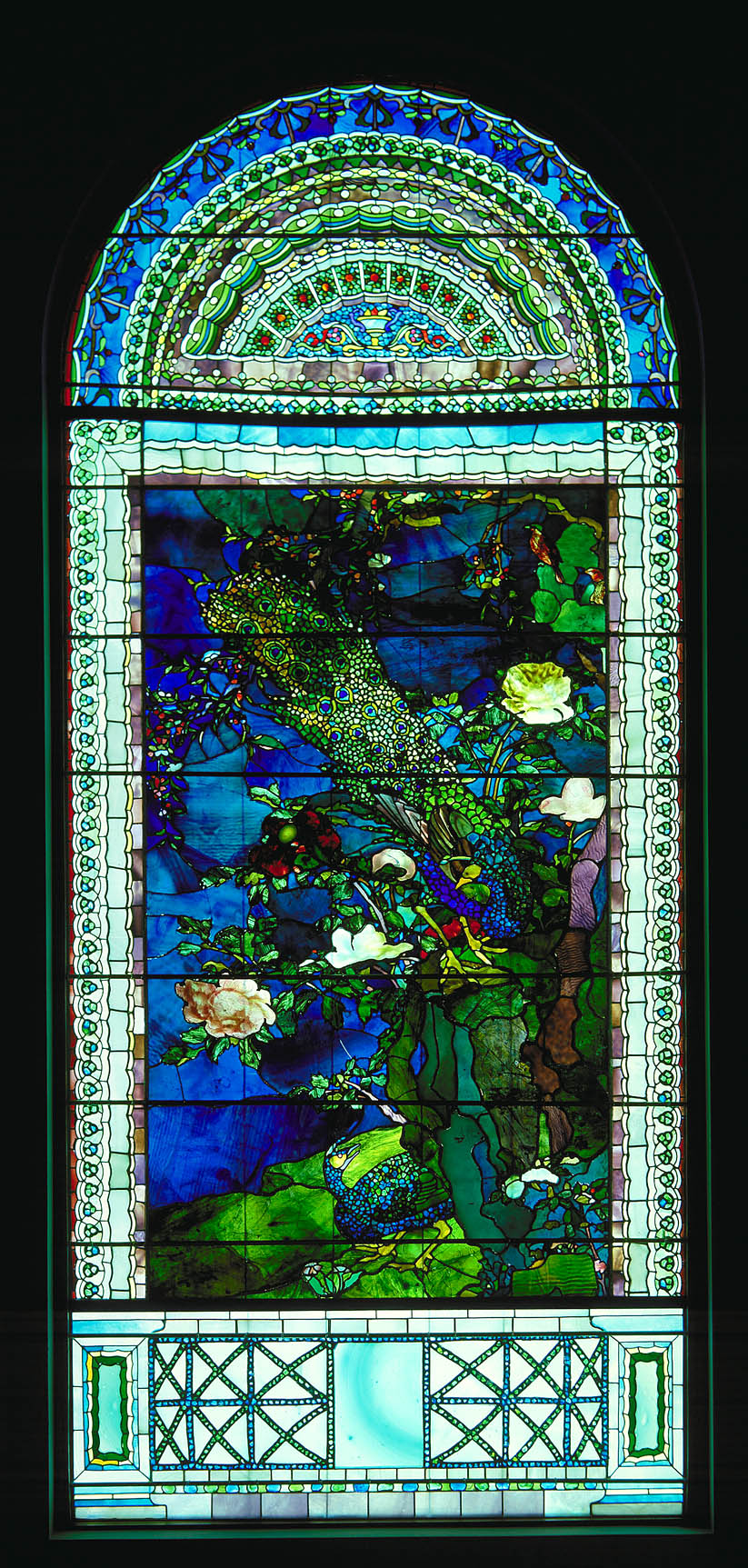Peacocks and Peonies I

La Farge's stained-glass windows reflect the Gilded Age fascination with medieval art and craftsmanship. The industrial revolution had made inexpensive, mass-produced glass available to anyone, but art glass remained an emblem of wealth and good taste. These windows were commissioned by Frederick Lothrop Ames, a railroad magnate who had them installed in the vast, baronial hall of his Boston house.
The tail feathers of the peacocks are made of bits of glass in the "broken jewel" technique; each peony blossom is a single piece of glass molded to catch the light differently through the day. La Farge layered his colored glass as a painter would build glazes of colors to achieve the right shade. For the composition, he borrowed from many cultures: the central panels with the bird and flower motif evoke Chinese and Japanese screens; the lower panels emulate Pompeian architecture; and the transoms above recall the tympanum above the door to a Romanesque cathedral.
Exhibition Label, Smithsonian American Art Museum, 2006
- 10
- Other objects by this creator in this institution
- 118
- Objects by this creator in other institutions